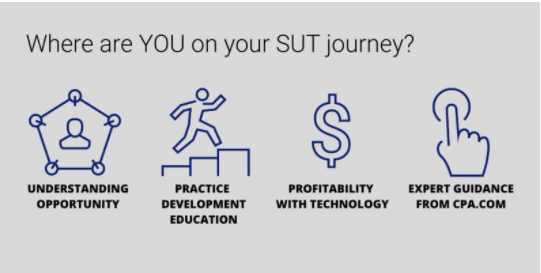As we look ahead to the prospect of an economic recovery and reflect on changes that the disruption of the last year set in motion for your business clients, sales and use tax (SUT) compliance looms large as a growing issue.
SUT was already gaining steam before the pandemic struck, following the Supreme Court’s 2018 Wayfair decision, which determined that states can broadly require online retailers to collect sales tax even if they lack a physical presence - expanding nexus. Then, the economic effects of the pandemic created the perfect SUT storm: Consumers ramped up their online spending and cash-strapped states and localities began looking for new sources of revenue. As a result:
- E-Commerce has reached new heights, and there are few indications that it will retreat to pre-pandemic levels. In fact, according to emarketer.com, e-commerce sales are expected to reach 19.2% of all US retail spending by 2024, surpassing the 14.4% of spending experienced in 2020.
- States are desperate for revenue – most predict revenue declines in FY2021. In fact, in November 2020, the Congressional Budget OfficeCBO predicted an approximate $400 billion loss through 2022. While this was before subsequent legislation was passed that brought direct relief to states, there are still lingering questions, including whether it is enough to close the revenue gap.
Given the significant increase in online sales, SUT is a natural area of focus for state tax authorities. This means your clients need to get up to speed on the SUT issues facing their businesses – including many who have never before had a reason to pay attention to SUT.
It also means you and your firm need to deepen your understanding of SUT issues fast – in time to help clients avoid noncompliance with SUT regulations as tax authorities sharpen their focus. If you are not seeing an uptick in client demand today, get ready – it’s coming.
Preparing for Success: Where to Start
Being prepared for the greater uptick in client demand isn’t as simple as putting a new “We can help with sales taxes” section in your client newsletter or on your website. It’s a more complex issue that requires preparation. Compared to other tax areas, SUT simply requires more effort given its complexity, extraordinary variance across jurisdictions, and constantly evolving nature.
If your firm is ready to branch out and provide SUT services, we’ve outlined key considerations as you proceed. From determining where to start, to identifying all the foundational resources, tools, and best practices it takes to be a SUT success, we have the right resources to guide you.

Resources: Getting Started
Here’s a useful list of resources we developed to help SUT professionals get started:
- SUT can be a big deal for your firm and your clients – whether they know it or not. Spend a little time on understanding this issue and opportunity now, and your firm can be well-positioned to realize the benefits in the coming year. Learn more in this article.
- Want to learn more about the different types of SUT practice development and education that are available to the accounting profession? Our guide, Mastering SUT Services: Plan, invest, network, is the best place to start. It discusses where to focus, which types of education opportunities (workshops included) are most important, and which specific education programs can help most.
- If you’re exploring how your firm can leverage technology for your services – whether advisory, compliance or even referral – our preferred partner solution offers some suggestions. Learn more here.
For additional resources, insights and expert guidance, visit cpa.com/sut.

